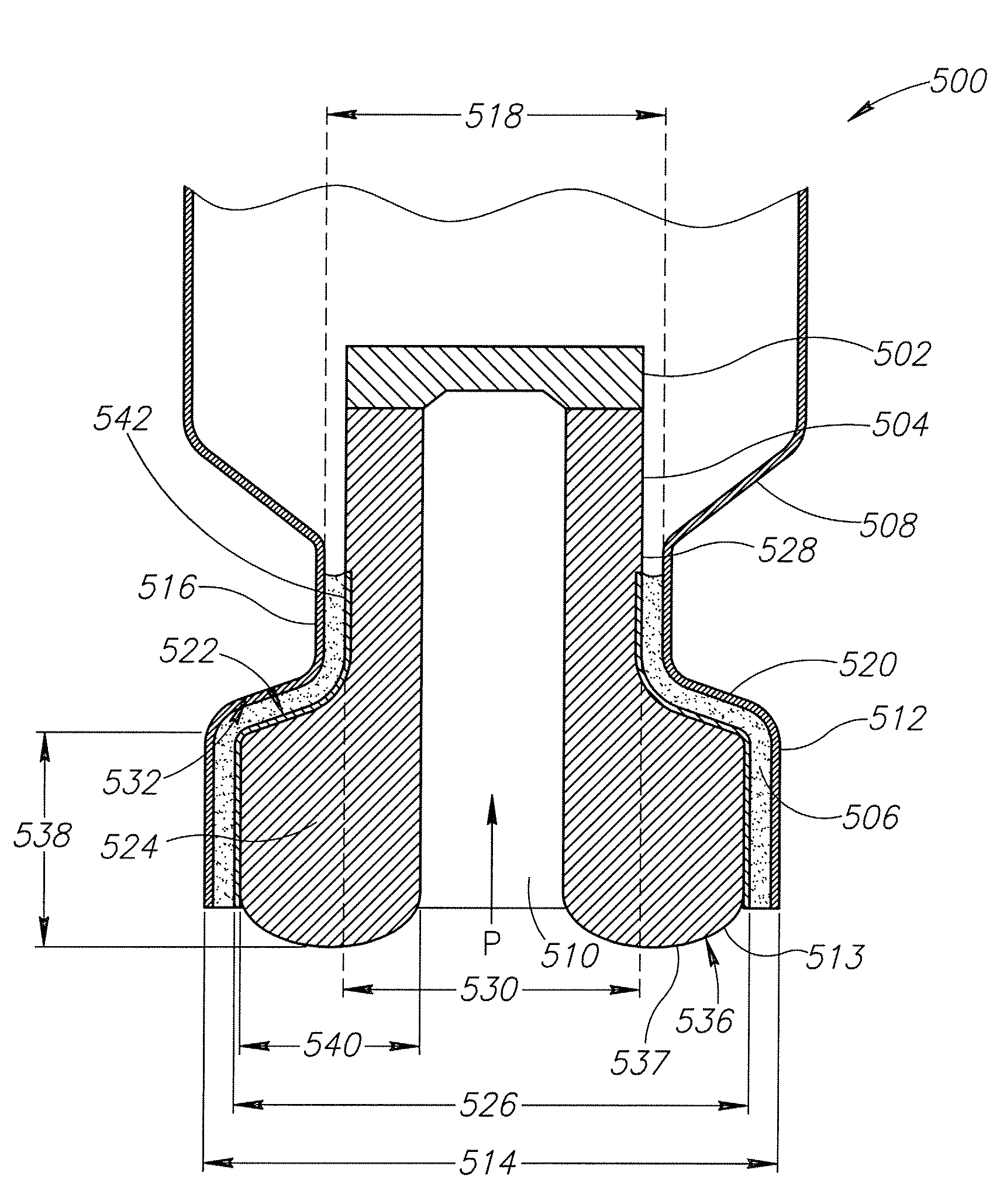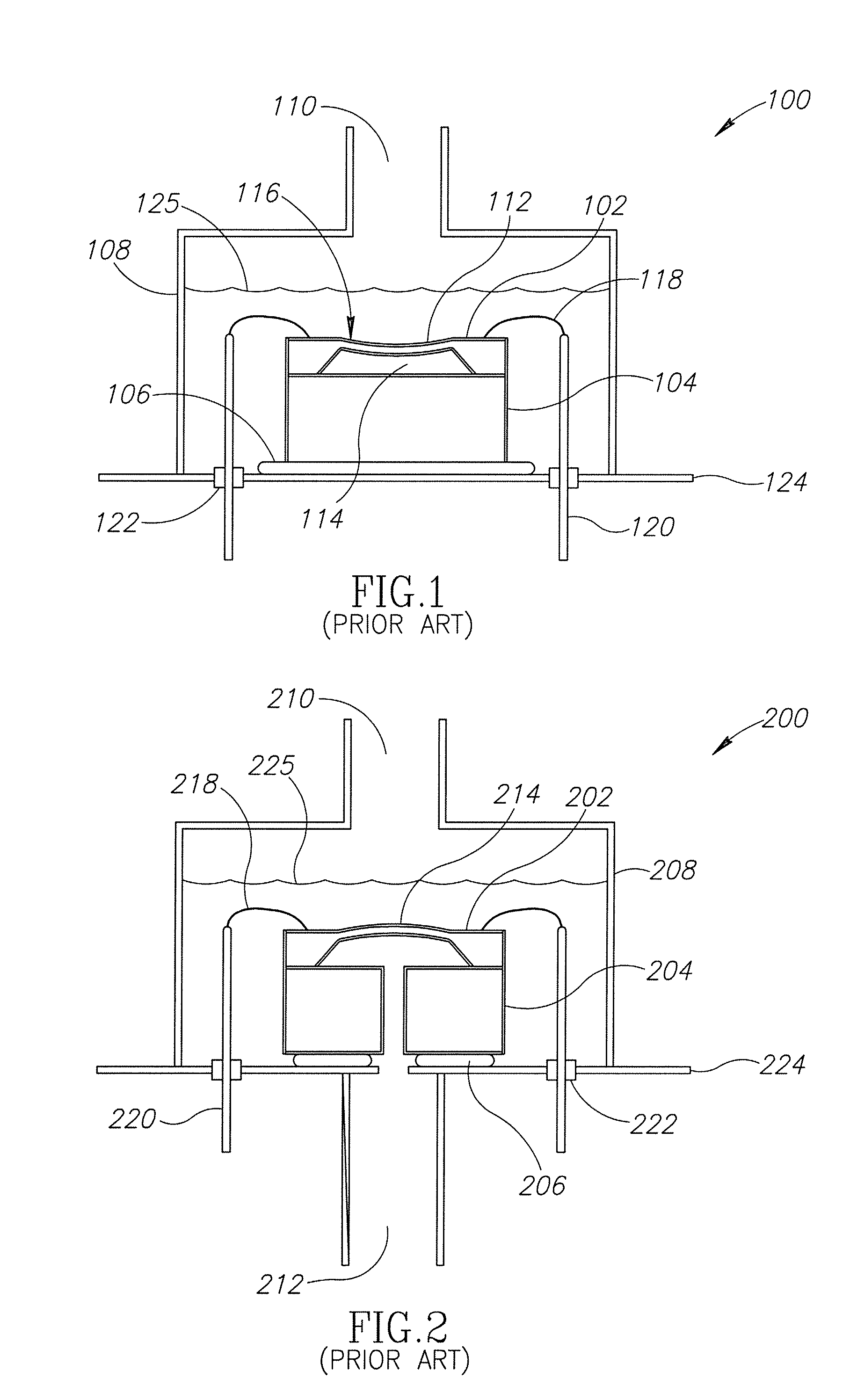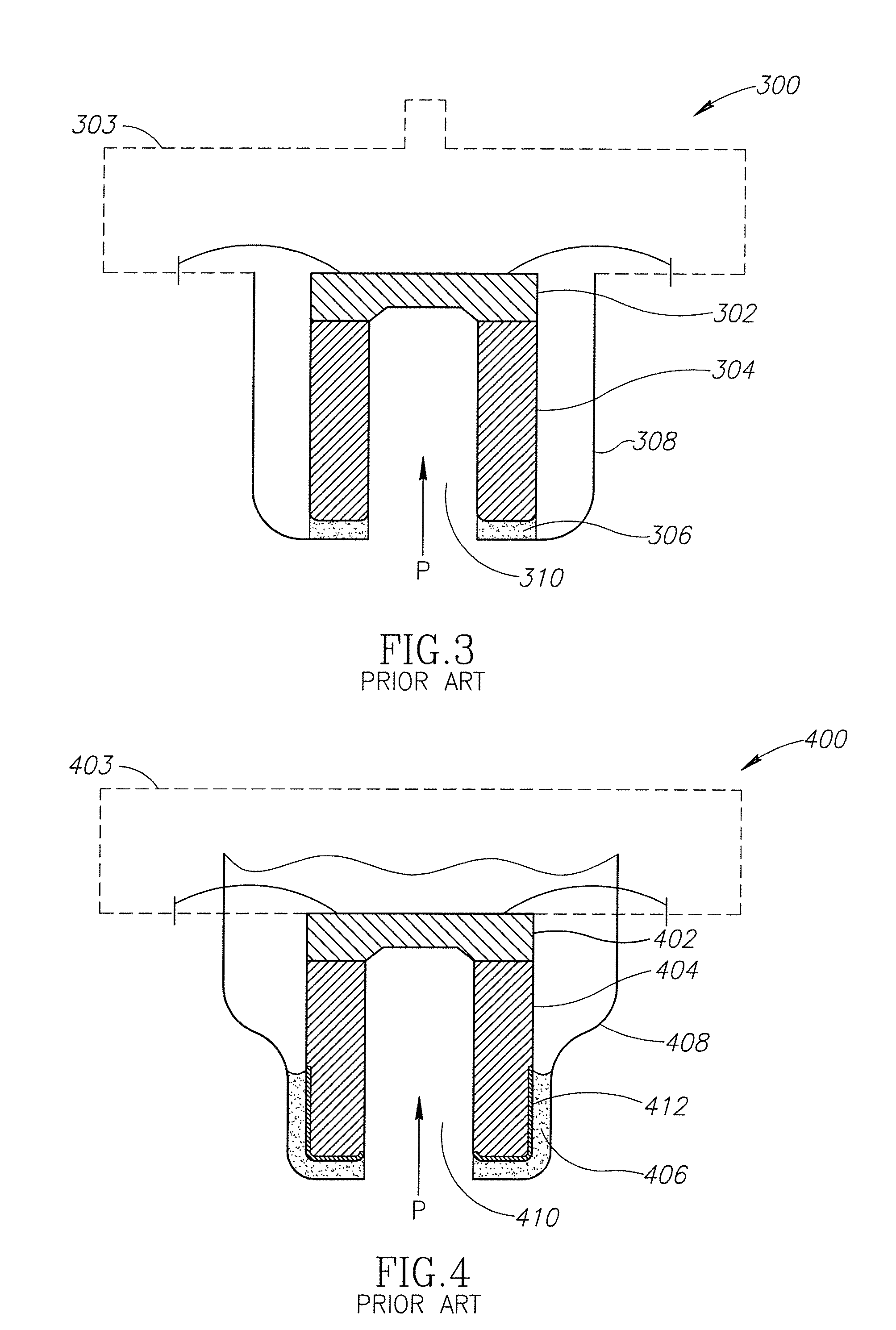Hermetic attachment method for pressure sensors
- Summary
- Abstract
- Description
- Claims
- Application Information
AI Technical Summary
Benefits of technology
Problems solved by technology
Method used
Image
Examples
Embodiment Construction
[0018]In the following description, certain specific details are set forth in order to provide a thorough understanding of various embodiments of the invention. However, one skilled in the art will understand that the invention may be practiced without these details or with various combinations of these details. In other instances, well-known structures and methods associated with pressure sensors and the operation thereof may not be shown or described in detail to avoid unnecessarily obscuring descriptions of the embodiments of the invention.
[0019]The following description is generally directed to an attachment joint for a pressure sensor where at least a portion of the joint is under compression during operation. By arranging at least a portion of the joint to be under compression, the failure modes of the previously-described butt and sleeve joints may be substantially reduced, if not eliminated. In a preferred embodiment, the pressure sensor includes a bulbous or expanded end po...
PUM
 Login to View More
Login to View More Abstract
Description
Claims
Application Information
 Login to View More
Login to View More - R&D
- Intellectual Property
- Life Sciences
- Materials
- Tech Scout
- Unparalleled Data Quality
- Higher Quality Content
- 60% Fewer Hallucinations
Browse by: Latest US Patents, China's latest patents, Technical Efficacy Thesaurus, Application Domain, Technology Topic, Popular Technical Reports.
© 2025 PatSnap. All rights reserved.Legal|Privacy policy|Modern Slavery Act Transparency Statement|Sitemap|About US| Contact US: help@patsnap.com



